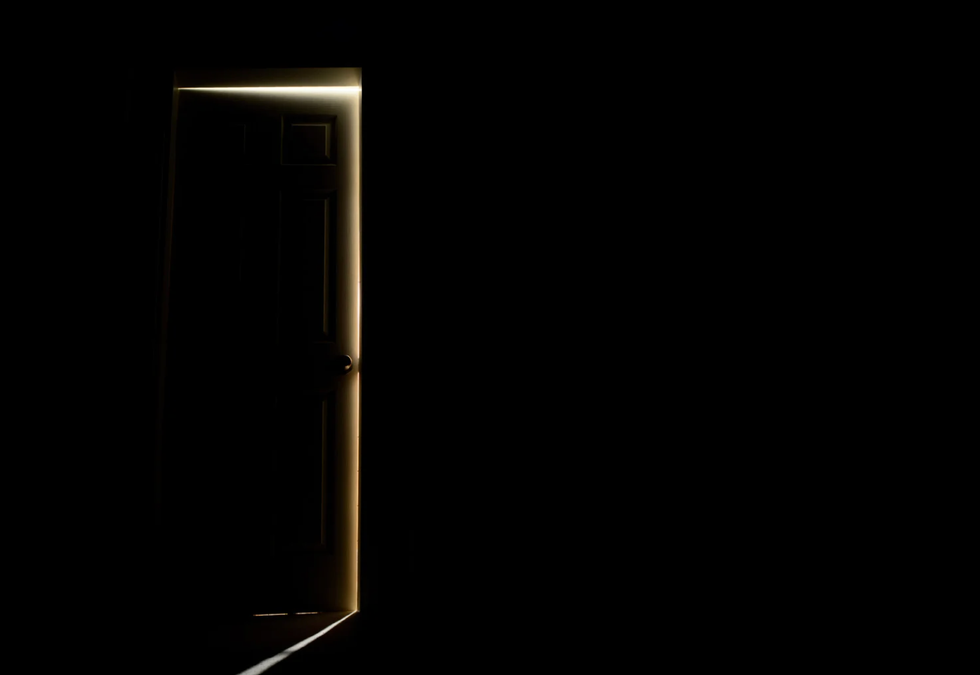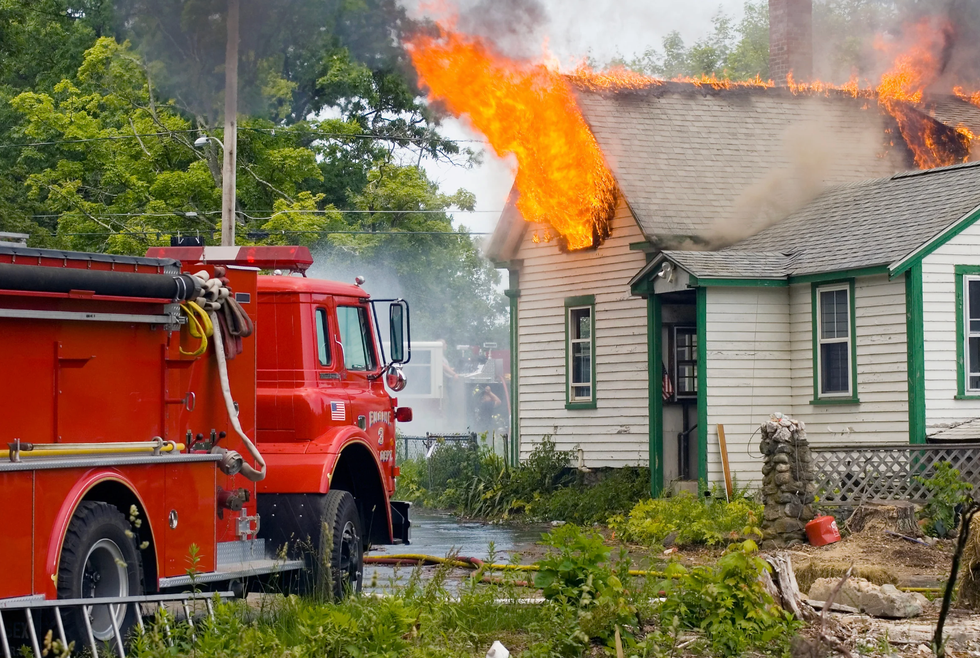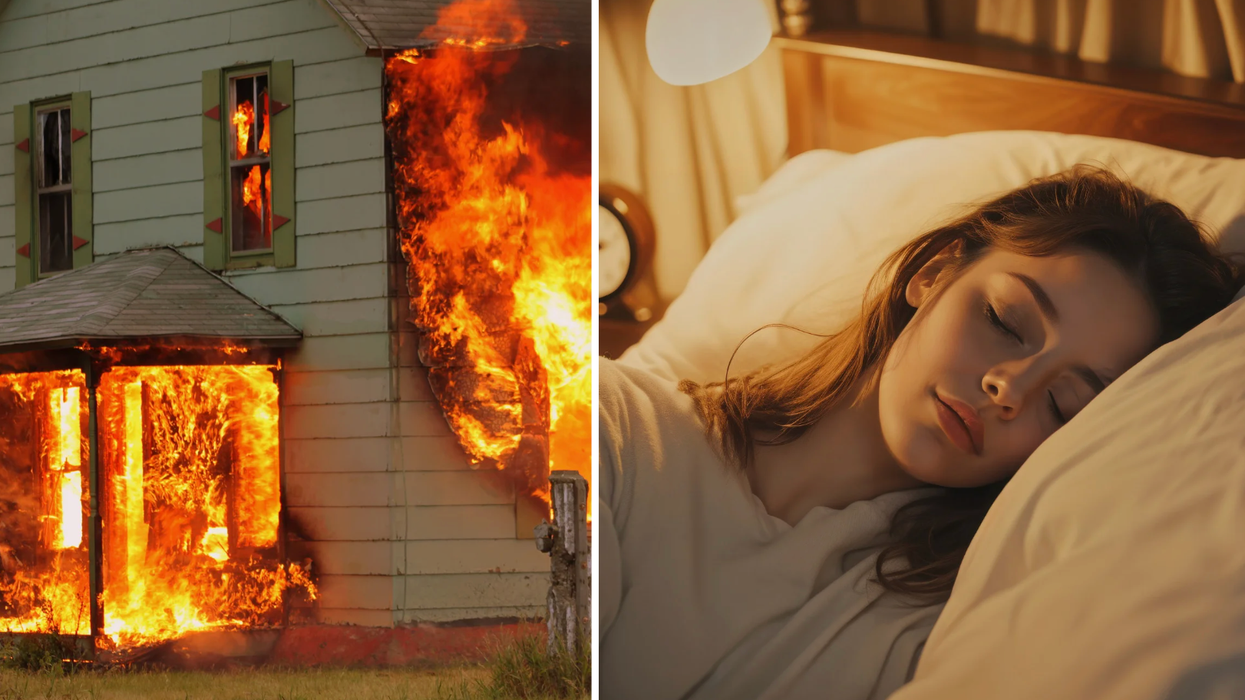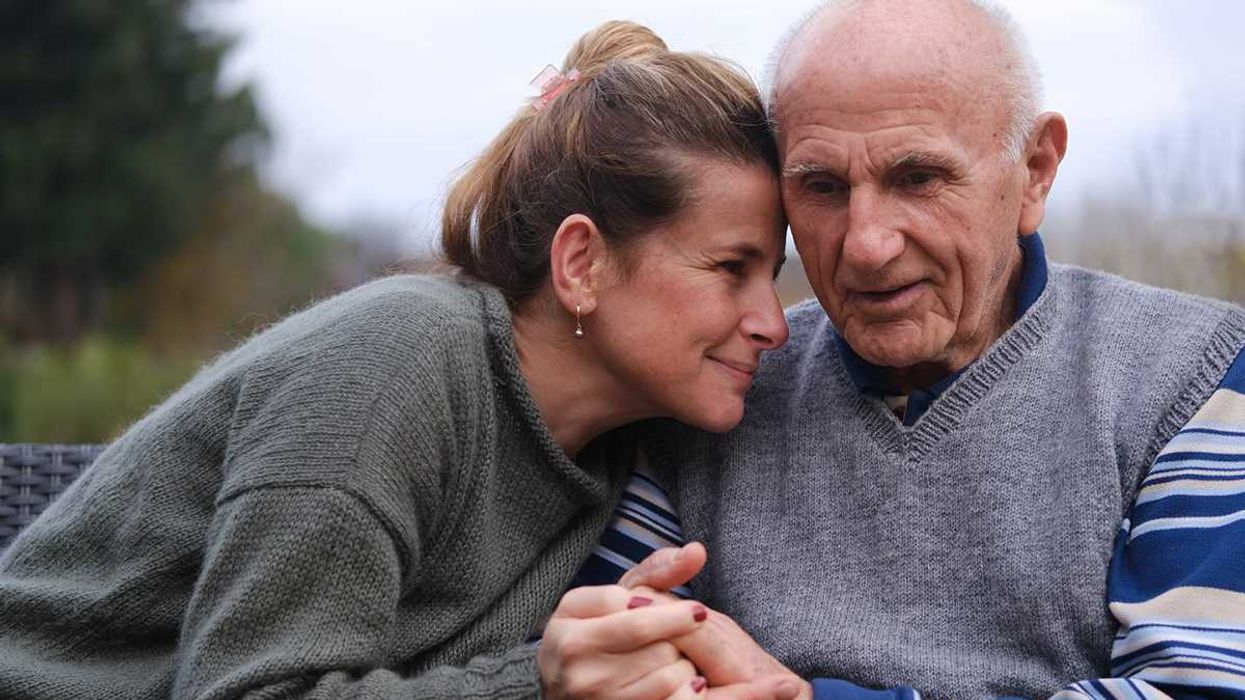It's a simple nightly question: should you sleep with your bedroom door open or closed? Many people prefer it open for better air circulation or to hear what's happening in the house. But according to fire safety experts, that common preference could be a fatal mistake.
A 10-year research project by the UL Fire Safety Research Institute (FSRI) has provided a definitive, life-saving answer, and they are urging the public to make "Close Your Door" a new part of their safety plan.
The institute's research used thermal imaging cameras to track the spread of a fire in a home. The difference between a room with an open door and one with a closed door was staggering.

The study's most noteworthy observation was the temperature. Rooms where the doors were left open were engulfed in flames and reached a "shocking temperature of over 1,000 degrees Fahrenheit." By contrast, the rooms with closed doors "were detected to have a temperature of less than 100 degrees Fahrenheit."
Stephen Kerber, director of the institute, was blunt about the findings. “You could see a remarkable difference that a person could be alive in a room with a closed door much longer,” he noted.
But the heat wasn't the only danger. The study also measured the concentration of toxic gases, the real killer in most fires. Rooms with open doors were found to have "extremely toxic" conditions, with 10,000 PPM (parts per million) of carbon monoxide. The rooms with closed doors? Only 100 PPM.

This data has pushed fire safety personnel to make an urgent announcement. “My first piece of advice is sleep with the bedroom door closed,” Kerber cautioned, adding that it was constantly emphasized “just how much safer” a person would be behind that simple barrier.
The research also debunks a common and dangerous myth: that you should open windows to let smoke out. Kerber explained why this is the worst thing you can do.
“People think, ‘Well, there’s smoke in my house. I want to let the smoke out.’ Yes, you’re letting the smoke out, but you’re letting the air in and that’s where the problem occurs,” he said. A fire feeds on oxygen, and opening a window provides it with the fuel it needs to grow and spread faster.
A closed door, on the other hand, acts as a barrier, starving the fire of oxygen and blocking the deadly smoke and heat, buying you and your family precious time.
“If you are a parent with children in the home and that smoke alarm goes off, if you closed their door before you went to bed... you know your children have longer to survive in that situation,” Kerber explained.
The message is clear: “If Stop, Drop & Roll is for when your clothes are on fire, ‘Close Your Door’ is for when your house is on fire and you cannot get out. It’s the modern version of what needs to be done.”
fire safety, close your door, sleeping habit, bedroom door, house fire, UL Fire Safety Research Institute, Stephen Kerber, carbon monoxide, fire prevention, home safety YouTube
This article originally appeared earlier this year.

















 A hotel clerk greets a guestCanva
A hotel clerk greets a guestCanva Gif of Faye Dunaway' as Joan Crawford demanding respect via
Gif of Faye Dunaway' as Joan Crawford demanding respect via  An empty rooftopCanva
An empty rooftopCanva
 A road near equatorial Atlantic OceanCanva
A road near equatorial Atlantic OceanCanva Waves crash against rocksCanva
Waves crash against rocksCanva
 Two people study a mapCanva
Two people study a mapCanva Foggy Chinese villageCanva
Foggy Chinese villageCanva

 An excerpt of the faxCanva
An excerpt of the faxCanva
 Robert Redford advocating against the demolition of Santa Monica Pier while filming "The Sting" 1973
Robert Redford advocating against the demolition of Santa Monica Pier while filming "The Sting" 1973
 Image artifacts (diffraction spikes and vertical streaks) appearing in a CCD image of a major solar flare due to the excess incident radiation
Image artifacts (diffraction spikes and vertical streaks) appearing in a CCD image of a major solar flare due to the excess incident radiation
 Brady Feigl in February 2019.
Brady Feigl in February 2019.